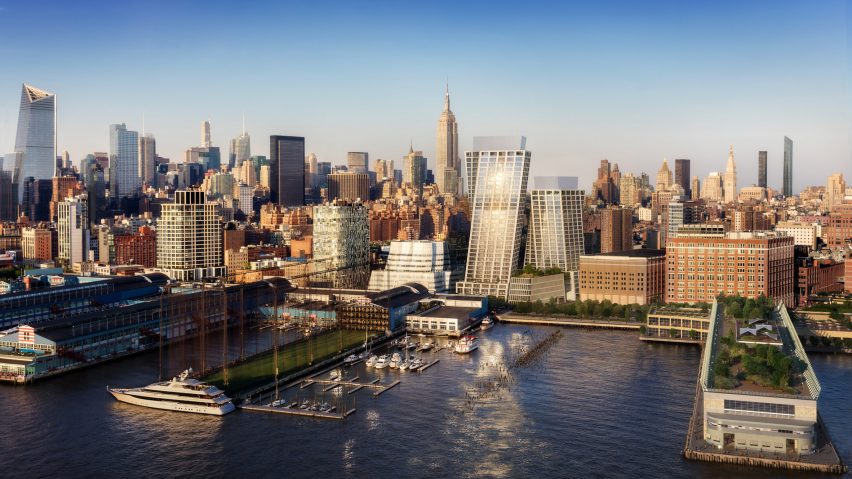Architect Bjarke Ingels is building a pair of towers in New York that he says are shaped to "dance" with each other. Here's a look at a few other buildings designed to look as if they are performing a rhythmic routine.
Ingels' firm BIG recently unveiled new images of The XI (The Eleventh), a development beside the High Line. The architect told Dezeen that the pair of towers, containing residences and a hotel, twist around each other in a "dance" that enables both buildings to enjoy views of the Hudson River on one side and the popular elevated park to the other.
Find about more about The XI ›
The Dancing House (or Fred and Ginger) by Frank Gehry, Prague, Czech Republic
Perhaps the most iconic "dancing" building, Gehry's design for the Nationale-Nederlanden insurance company was created with Croatian-Czech architect Vlado Milunić and now operates as a hotel.
The project, completed in 1996, was nicknamed by Gehry after Hollywood dance partners Fred Astaire and Ginger Rogers because its sculptural front looks like a taller male figure sweeping away a cinched glass form by its side.
American Copper Buildings by SHoP, New York, USA
Completed in 2017, SHoP Architects' American Copper Buildings sit on the Manhattan side of the East River close to the entrance of the Queens-Midtown tunnel. The two apartment buildings both kink about halfway up, and are connected by a skybridge, giving the impression that they are locked in an exchange with each other.
Find out more about Copper Towers ›
Dancing Towers by Daniel Libeskind, Seoul, South Korea
Although yet to be realised, Studio Libeskind planned this trio of skyscrapers for a large business district development near Seoul in 2012. The curvaceous glass forms, arranged close together atop a podium, are based on the sleeves of costumes worn by traditional Korean Seung-Moo dancers.
Find out more about Dancing Towers ›
Dancing Towers by Zaha Hadid, Dubai, UAE
Zaha Hadid also proposed a set of "dancing towers", this time for a project in Dubai back in 2007. Accentuated by sinuous vertical lines, their metallic facades bend and twist so the three buildings touch each other at different points, and appear frozen in motion.

